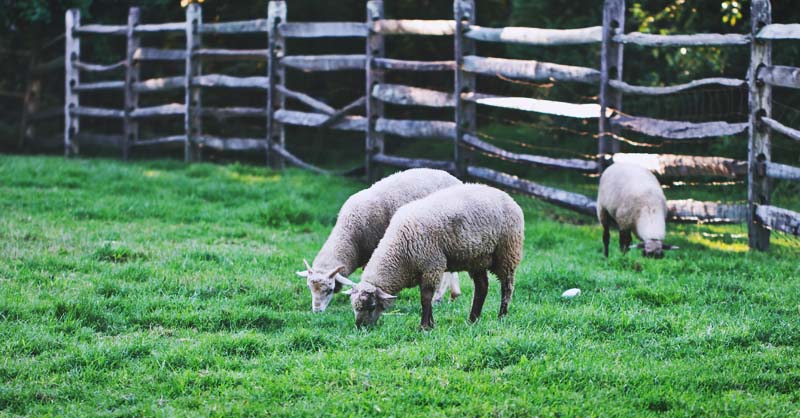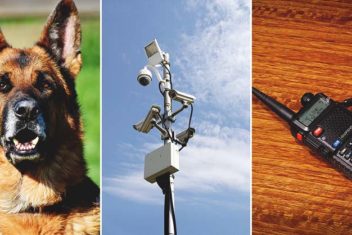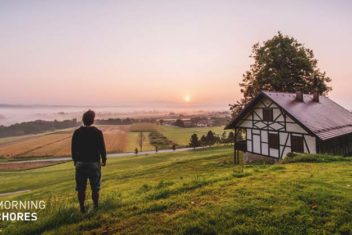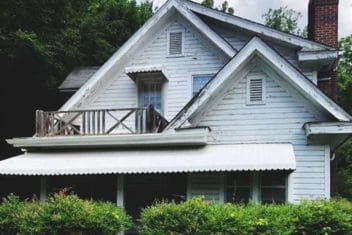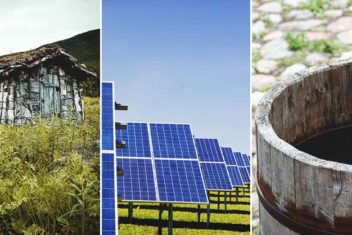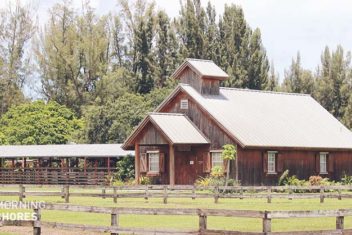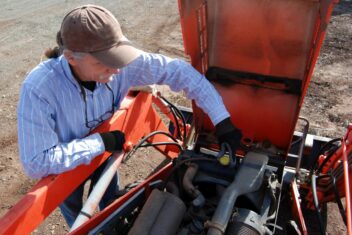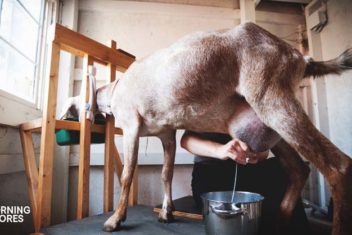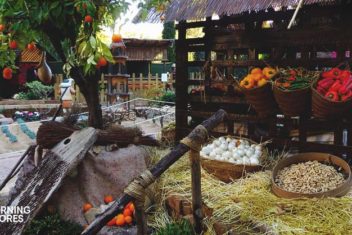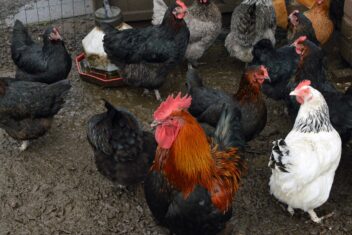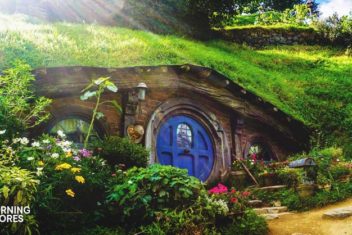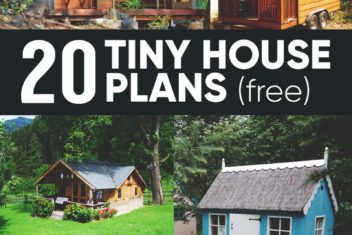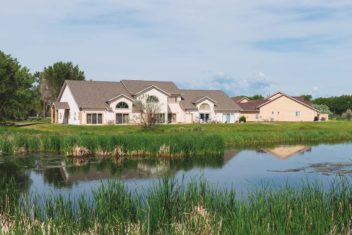Have you recently purchased your perfect plot of land for your homestead?
Are you curious about what your first steps should be?
First of all, Congratulations! Buying the land is the first step towards investing in your farm, your family, and your future.
But the next big step is laying your land out properly. I’m going to give you a few general tips on how you can lay out your property.
I realize every parcel of land is different. Therefore, you’ll have to apply these tips in a way they can work for your property.
Let’s jump right in on how you can assess and plan your property:
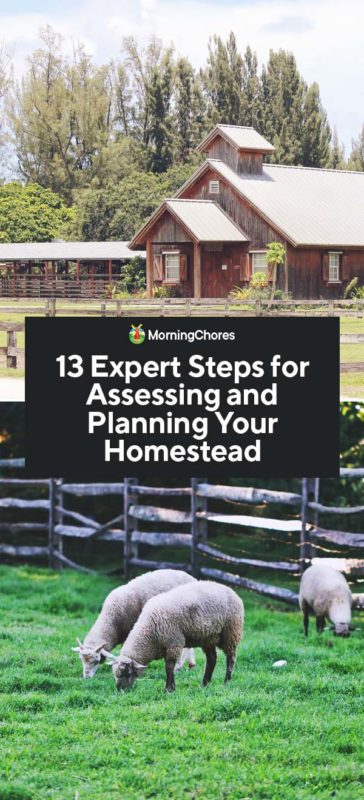
1. Water, Water, Water
If you don’t have water on your property, you don’t have a homestead. Sorry to start with such a blunt fact, but it’s the truth.
You must have water to survive. Your animals and plants must have water to survive too.
Therefore, your top priority must be to locate the water source on the property. Hopefully, you already have a well in place or a body of water on the property you can use to get water to your home.
If not, don’t lose hope. There are multiple ways to bring water to your homestead. Research each option and figure out which water solution works best for you.
Once you have your water in place, you’re ready to start building your homestead.
2. Sunny Spots are Prime Locations
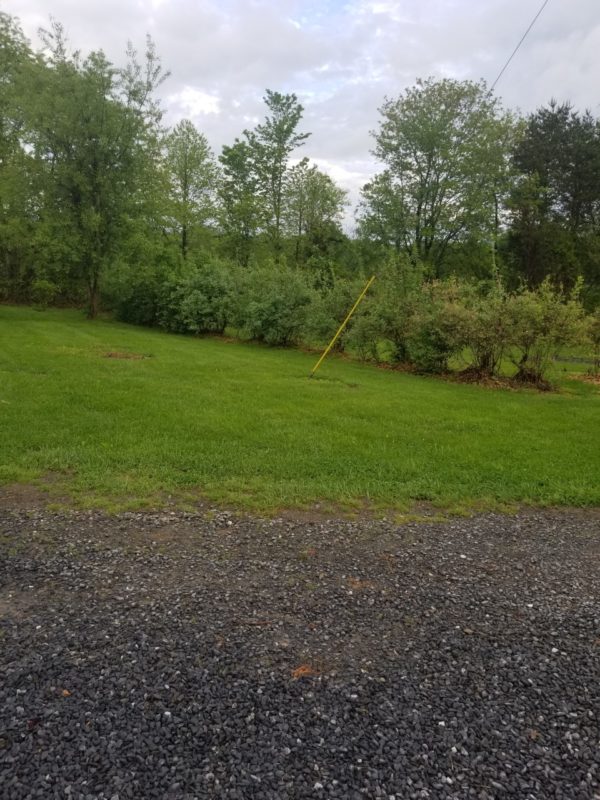
I’m in the process of building my second homestead. It isn’t an easy job and one which takes a great deal of planning.
The upside is, I learned valuable information from the mistakes I made when building my first homestead. I now get to apply those lessons to my second, larger homestead.
Make sure when water is in place, you begin surveying your property. Locate every sunny location on your property.
These sunny spots are going to be perfect locations for your garden, raised beds, an orchard, a vineyard, or a berry patch.
Begin marking these areas off with stakes. Also, check their distance from your water source. Are you going to be able to get a water hose to each of these areas to water plants?
If the answer is yes, you’ve found a wonderful gardening location. If the answer is no, you must get creative.
Ask yourself if there is one location better than others? If not, can you come up with a creative way to run hoses underground or attach a watering tank to an ATV or truck to drive it to your gardening location?
Part of homesteading is growing your own food, and most foods require a sufficient amount of sunlight, and they all need adequate watering.
3. Do You Have Any Flat Spots?
If you have flat spots on your property, these will be prime areas for building structures. I’m going to assume you’ve either purchased land which has a house on it, or you already know where your house will be built.
If not, figure out your home location first. You don’t want to take the only flat location to build a barn before your house.
However, once your home is properly located, you can use any other flat spots to figure out where you could build a barn, a chicken coop, a storage shed, a garden shed, or even a greenhouse.
These are all important buildings on your homestead. If you are building animal structures, I encourage you to make sure you can get water easily to the structures.
If not, you must figure out a water solution as you’re considering where the best place to put the building will be.
Even if you don’t have perfectly flat locations, try to see if there’s an area which would require less grading than others. If you find these locations, they’ll be your best building locations.
4. Stake Off Your Pasture
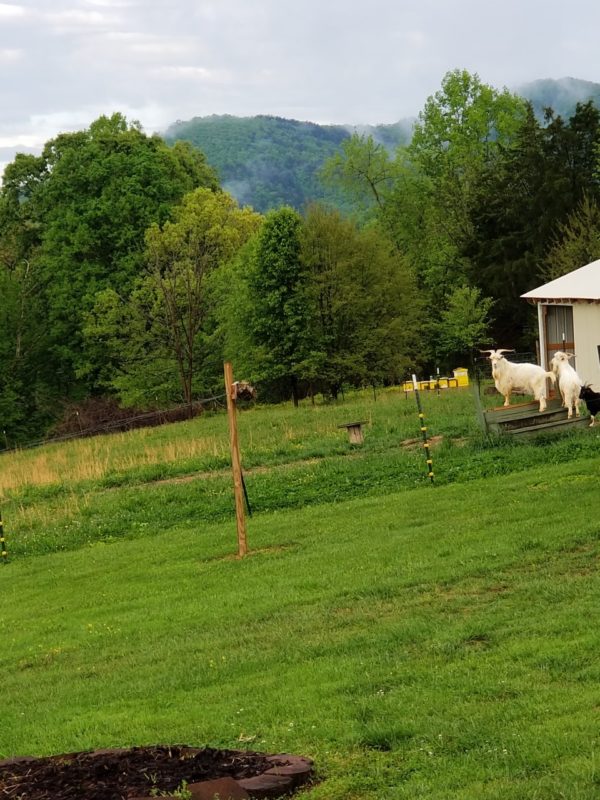
When buying your property, did you purchase enough land to have a little bit (or a larger area) of pasture?
If you did, now is the time to locate it. You’ve figured out where your water source is, where you’ll plant your vegetation, and where your structures will be.
It’s now time to figure out where you can put your livestock out to graze. If you have a larger quantity of land, the pasture may be enough to sustain them during the warmer months.
If you have a smaller area for them to graze, you may have to supplement their diet with hay and other goodies from your garden.
Either way, giving your animals room to roam is a way to keep them happy and getting enough exercise while also mowing your land for free.
However, if you don’t have enough room for pasture, make sure your animal structures are big enough to house your animals comfortably and stick with smaller livestock.
Keep in mind, your pasture area doesn’t need to be flat. It doesn’t even need to be sown with grass. It can be wooded, or you can sow seed after you’ve become established on the property.
Right now, you’re looking for an area to give your animals space to roam and make less maintenance for yourself.
5. Take Down a Few Trees
Our first homestead location was wooded. This made it difficult to have many areas with adequate sunlight.
If you’re living in an area with a similar set-up don’t give up. Instead, start knocking down trees. We emptied our entire backyard of the trees close to our home.
This gave us firewood, adequate building supplies, and opened our yard up to more sunshine.
Look for areas around your property where you can fall a few trees. We were able to create a fenced area for our backyard with raised beds and a greenhouse.
We created a large gardening area behind our home and were also able to protect our home from falling trees during storms because this pushed them away from the house.
The felled trees were used to build a woodshed, a garden shed, a goat shelter, and a pig pen. Don’t feel as though you’re wasting by cutting down trees to create more living space.
Instead, look at it as a free resource and clear the land necessary to make your property function.
6. Life on a Hill
When we moved to our current homestead, we said we’d only buy flat land. At first glance, our property seemed rather flat.
Seemed being the operative word. Once we moved onto the property and began to build, we realized the whole property is on a slight hill. Only enough to be annoying when trying to build anything.
If you’re in an area where flat land isn’t common, you aren’t alone. Don’t assume your land can’t work because of this.
It may require some extra grading when building or a little creativity when gardening, but it will still be functional land.
You can fence in steeper areas for your livestock to roam and graze. Our pasture area has a hill in it, but our goats love it, and it has helped keep them healthy.
If you’re working with steep locations, consider hügelkultur for gardening. You could place logs on the side of a steeper embankment to build it out a little from the edge.
Add your composting items and dirt to create the mound from the edge of the hill. Plant on top of the mound.
This is a great way to maintain a quality garden for years to come with little added work to you, and it would also help you to utilize an otherwise unusable space.
You could also dig into the hill to make great animal shelters which could utilize the ground to keep them better insulated during the colder and warmer parts of the year.
7. Place Your Large Livestock Wisely
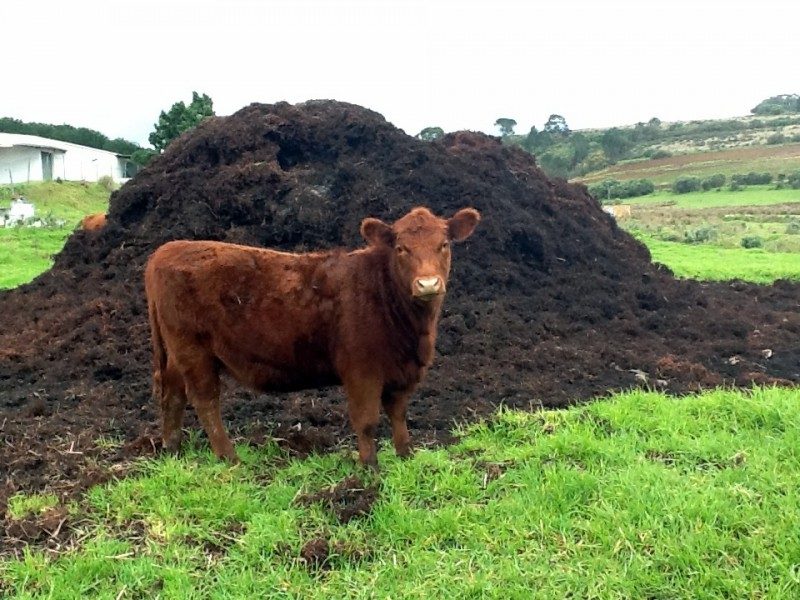
When choosing where to place livestock, it’s rational to place your smaller livestock closer to your home. My chickens are in a location I can see them from my living room window.
My goats are in the pasture closest to my house which allows me to look out of multiple windows and see them at any given time.
It gives added protection because I keep multiple lights on them at night and most predators try to avoid being seen.
However, when housing larger livestock, it’s wise to keep them farther away from the house. Not only are they larger and have a better chance of surviving an attack, but they also generate more odors.
We raise feeder pigs each year, and I keep them farther away from our home because they do pack a potent punch.
When we raise cows, they go in the pasture further away from our home because bigger animals produce copious amounts of waste.
As you decide where to place your livestock, give this some thought and use it as a general rule of thumb for animal placement.
8. Stake It Off
One of the wisest things you can do when assessing and planning your new homestead property is to stake everything off before you build the first structure or plant the first seed.
We didn’t do this with our first homestead. Instead, we built as we could. The problem was when we were finished building, we realized we chose less than ideal locations for some structures, but we forced our own hand because we’d already built other items in their place.
For instance, where my old goat area was, it was probably a more ideal spot for my chickens because of the amount of shade it naturally provided.
The placement of our pigs would’ve been better for our goats because it was wooded, and the goats would have loved it.
Make sure you stake everything off and look at the layout. You can move stakes around, but you can’t move buildings once they’re complete.
Take the extra time to make this visual assessment of your property. You’ll be glad you did!
9. Consider a Perimeter Fence
As you’re planning your property, consider a perimeter fence for your area. Perimeter fences are expensive, and it may not be the first thing on your list.
However, you need to have an idea if you need one for your homestead and if you do, what type of fence is a realistic option for your property and budget.
The positive to having a perimeter fence is it makes it more difficult for unwanted guests (both human and non-human) to make their way onto your property.
It also helps with keeping your animals at home. There will come a time when an animal will find a way to escape from their area. It happens.
By having a perimeter fence, it’ll make it more difficult for the animal to venture from your property.
The negative to having a perimeter fence, is it is a considerable investment, and it requires more work. By assessing whether a perimeter fence would be beneficial to your property, you’ll know whether this should be on your radar or if you can move onto something else more pressing.
10. Proper Fencing for Animals is a Must
While we’re talking about perimeter fences, let’s jump on over to the idea of proper animal fencing. We all do the best we can with what we have.
However, you must make sure what you’re doing actually works. Fencing is meant as much to protect your animals as it is to keep them in their designated area.
Make sure you use proper fencing for your animal areas. This will take research on your part before construction because everyone has different opinions about fencing.
When we first moved to our current property our neighbor saw us putting up electric fencing for our goats. They told us what a mistake it was because it wouldn’t keep them in place.
We’ve been here almost two years, and it has worked better (for us) than any livestock fencing ever has in the past.
It was much less expensive, and it looks cleaner (in my opinion.) It wasn’t their experience, though, and they wanted to warn us.
Choose the fencing you feel will work best for your animals and go with it. As long as it keeps your animals safe and in place, you’ve made a good choice.
11. How to Add Privacy When Needed
Not all land comes with privacy. We haven’t experienced complete privacy on either of our homesteading properties.
Our first property was two acres, and we constructed a mini-farm on it. We had privacy to the front and back, but still had neighbors on each side.
Thankfully, there was a thick tree line which gave us the feeling of seclusion. On our current property, we live on ten acres, but it’s an alley-way piece of land.
Meaning, I have neighbors at both front corners of my property. If you find a good deal on land, don’t let this stop you from buying it.
Neighbors aren’t a bad thing. It’s good to have people you can share your crops with, have a good conversation with from time to time, and if they’re curious about your lifestyle, you can share some information with them too.
If you’re like me, you need privacy. I don’t like them feeling as if I’m staring at them every time I’m outside, and I don’t like them having to wonder if I’m feeling the same.
Take the time to plan how you can create privacy on your property. Two of the easiest ways to create functional privacy is with trees or a hügelkultur garden.
Thuja trees are an excellent option for lining your property because they grow quickly, thick, and they look good. Plus, they aren’t expensive.
Line your property with them, and you’ll have a natural privacy fence in a few years. If you’d like to block the view from your road or even a neighbor, you could plant a hügelkultur garden.
The mound will create privacy, but it will also give you a functional growing space for years to come.
12. Don’t Forget Your Signs
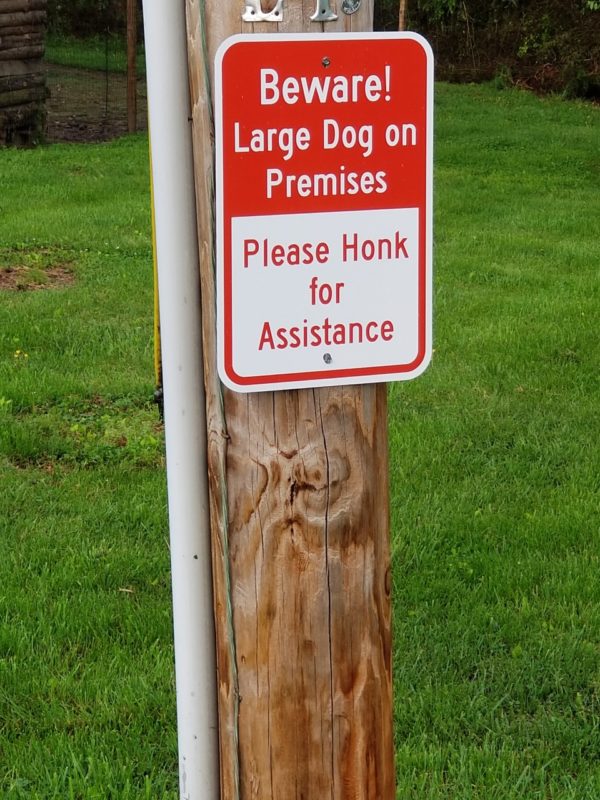
I didn’t realize how important proper signage was until we moved to our current property. When you’re assessing your property, consider the liabilities you may create on your property without proper signage.
For instance, at my previous homestead, I didn’t have many visitors. My mail lady was a lover of dogs, and she had a farm which made her at ease with every creature I had on my property. Our UPS driver loved our dog too, which made life simple.
They were the only people who ever came down our secluded dirt road.
Now, I live off a paved road. It’s only busy during the school year, but I still sit approximately five acres from the road.
My previous dog passed away, but I have a new (larger) dog. She’s friendly to those she knows doesn’t pose a threat to myself or my kids.
But if you’re uninvited and she doesn’t recognize your car, she’s on high alert immediately.
She has a radial fence to keep her in a designated spot around the perimeter of our home, but people aren’t aware of where her fence stops. This is an issue because it seems I get more visitors here.
They rarely stay in the driveway. They drive as close to my front porch as possible, and it’s right in her designated area.
I realized quickly I had to post signs on the property to make our unexpected visitors aware I have a large dog on the premises on a radial fence, and they needed to stay in my driveway and honk for assistance.
It’s also important to post signs to let people know you are a functioning farm. They’ll hear animal noises, smell animal smells, and they enter your property at their own risk.
It may sound silly, but when you have a piece of property with animals and your family, it will need to be protected, and you need to be protected from liabilities when people unexpectedly come to a farm and don’t quite know how to handle it.
I say this with kindness, but you must expect people to walk up to your ‘working dog’ and pet it like it’s a suburban pet.
Dogs know when they have an area to protect, and you don’t walk right up to them and treat them as though they were Lassie.
You’d also be surprised how many don’t recognize an electric fence until it has shocked them, or they expect all livestock to be as friendly as a pet.
It’s the fact most people aren’t raised around a farm and don’t know what to expect.
By posting signs, it can help alleviate some of the stress of feeling as though you must educate everyone as soon as they drive onto your land.
If curious as to where you should post signs, I have one on my mailbox and one on a pole at the edge of my driveway for people to see as they’re driving up our driveway. If you have a gate to your driveway, place them there as well.
You want them to be obvious.
13. Create Spaces of Beauty
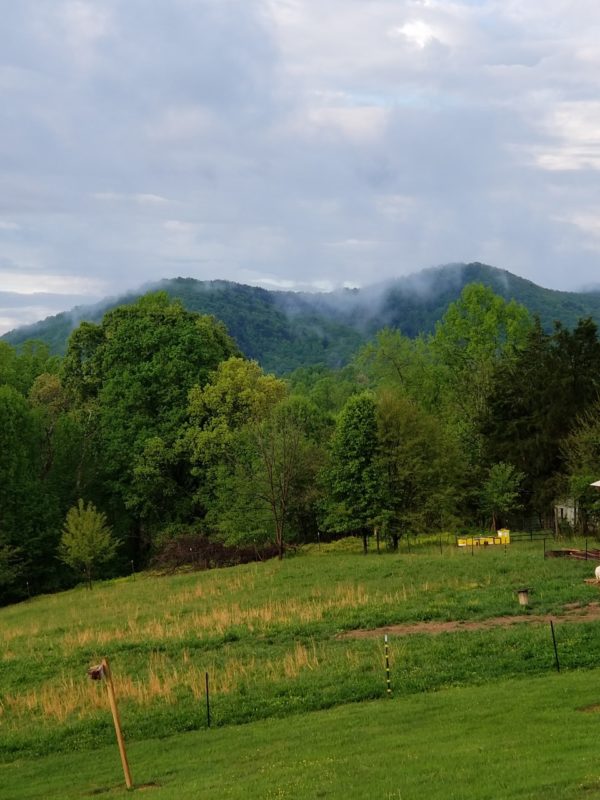
This last tip is perhaps one of the most important items on this list when assessing and planning your homestead.
Make sure as you’re staking off and choosing areas for gardens, buildings, animals, and proper sign locations; you also select spots for beauty.
It doesn’t matter if it’s a spot for a fire pit with a few chairs to go around it. It could be a place for a flower garden, a place to take in your views, or even a spot for a pool.
When you homestead, hard work is part of the equation. You will burn out if you don’t have a place where you can find rest, breathe deeply, and take it all in at the end of the day.
Therefore, stake this location off as well while you’re at it.
I have multiple beautiful spaces created around my property and a few more in the works because I learned this lesson the hard way.
A few months ago, I hit a brick wall. I was doing too much and not resting enough. This made me an emotional train wreck.
I learned to slow down because if you don’t enjoy what you’re doing, what’s the point? Now, I spend time on my back porch every morning and every evening taking in the view of the mountain in my backyard.
We plan on building a fire pit with swings in the front part of our property to have a place to gather at the end of the day and cook a meal over a fire.
I’m also planning on building a back patio outside of our basement to be able to take in my flower beds with the mountain.
You may not want as many beautiful spaces as I do (or you may want more.) The point is, find a place where even when everything else is a wreck around your property, you can go to this specific location and breathe knowing you have something of beauty on your property as well.
It truly helps you get over those moments where you feel totally overwhelmed.
Hopefully this list has encouraged you as you look at your new piece of land. Maybe you won’t feel quite as overwhelmed as you try to figure out how to transform a piece of bare land into a homestead.
By adding a little order to the process, it seems more manageable right off the bat.
Good luck with your new homesteading adventure. Every piece of land will throw a few curveballs, but you can handle it and create a beautiful homestead with each step forward.

